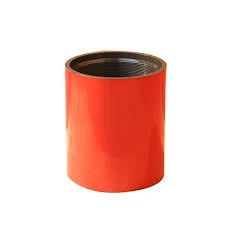- Afrikaans
- Albanian
- Amharic
- Arabic
- Armenian
- Azerbaijani
- Basque
- Belarusian
- Bengali
- Bosnian
- Bulgarian
- Catalan
- Cebuano
- Corsican
- Croatian
- Czech
- Danish
- Dutch
- English
- Esperanto
- Estonian
- Finnish
- French
- Frisian
- Galician
- Georgian
- German
- Greek
- Gujarati
- Haitian Creole
- hausa
- hawaiian
- Hebrew
- Hindi
- Miao
- Hungarian
- Icelandic
- igbo
- Indonesian
- irish
- Italian
- Japanese
- Javanese
- Kannada
- kazakh
- Khmer
- Rwandese
- Korean
- Kurdish
- Kyrgyz
- Lao
- Latin
- Latvian
- Lithuanian
- Luxembourgish
- Macedonian
- Malgashi
- Malay
- Malayalam
- Maltese
- Maori
- Marathi
- Mongolian
- Myanmar
- Nepali
- Norwegian
- Norwegian
- Occitan
- Pashto
- Persian
- Polish
- Portuguese
- Punjabi
- Romanian
- Russian
- Samoan
- Scottish Gaelic
- Serbian
- Sesotho
- Shona
- Sindhi
- Sinhala
- Slovak
- Slovenian
- Somali
- Spanish
- Sundanese
- Swahili
- Swedish
- Tagalog
- Tajik
- Tamil
- Tatar
- Telugu
- Thai
- Turkish
- Turkmen
- Ukrainian
- Urdu
- Uighur
- Uzbek
- Vietnamese
- Welsh
- Bantu
- Yiddish
- Yoruba
- Zulu
Types and Uses of Metric Pipe Couplings for Various Applications
Understanding Metric Pipe Couplings A Comprehensive Guide
In the realm of plumbing and piping systems, the importance of effective connections cannot be overstated. Among the various components that facilitate these connections, metric pipe couplings play a crucial role. It is essential for professionals and DIY enthusiasts alike to understand what metric pipe couplings are, their types, applications, and best practices for installation.
What are Metric Pipe Couplings?
Metric pipe couplings are fittings used to connect two sections of pipe, enabling the transfer of fluids or gases efficiently. They are designed to fit pipes that adhere to metric measurements, which are commonly used in many countries around the world, especially in Europe and Asia. The use of metric measurements ensures compatibility and simplifies the standardization process in various industrial applications.
Types of Metric Pipe Couplings
Metric pipe couplings come in several types, each catering to specific needs and applications
1. Straight Couplings These are the most common type, used to connect two pipes of the same diameter and type.
2. Reducing Couplings These couplings allow for the connection of pipes of different diameters. They are essential in systems where a reduction in flow size is needed.
3. Elbow Couplings Used to change the direction of piping, elbow couplings are available in various angles, typically 45° and 90°.
4. Union Couplings These allow for easy disconnection of pipes without cutting, making maintenance and repairs straightforward.
5. Cap Couplings Designed to cover the end of a pipe, these are typically used to seal off systems that are not in use.
Applications of Metric Pipe Couplings
metric pipe couplings

These couplings find applications across a variety of industries, including
- Construction They are commonly used in plumbing systems within residential and commercial buildings. - Manufacturing Metric pipe couplings facilitate the movement of fluids in industrial machinery and systems. - Automotive In automotive applications, these couplings may be used in fuel and oil systems. - Chemical Processing Due to their ability to handle various fluids, they are pivotal in chemical plant operations.
Best Practices for Installation
To ensure the longevity and functionality of metric pipe couplings, adhering to best practices during installation is crucial
1. Select the Right Size Always choose couplings that match the diameter and type of the pipes being connected to prevent leaks.
2. Inspect Components Before installation, check the pipe ends and couplings for any damage, such as cracks or corrosion, which may affect performance.
3. Use Proper Tools Utilize the correct tools for tightening and securing the couplings to avoid over-tightening or under-tightening, which can lead to joint failure.
4. Seal Thoroughly If required, use appropriate sealants or thread tapes for connections to enhance leak resistance.
5. Follow Standards Always refer to relevant industry standards and codes to ensure compliance and safety.
Conclusion
Metric pipe couplings are an essential component in many plumbing and piping systems, facilitating the effective transfer of fluids across diverse applications. Understanding their types, applications, and best practices for installation is vital for ensuring a reliable and efficient piping system. Whether you are a professional plumber or a DIY enthusiast, mastering the basics of metric pipe couplings can lead to successful projects and longer-lasting connections. Investing time in learning about these fittings can save money and prevent potential issues down the line, making it a valuable endeavor for anyone working with piping systems.
-
Well Casing Extension Couplings – Applications and InstallationNewsJun.06,2025
-
Types of Crossover Subs in Drilling & CompletionNewsJun.06,2025
-
Key Features of High-Quality Tubing Pup JointsNewsJun.06,2025
-
Installation and Maintenance Tips for Steel Couplings for PipeNewsJun.06,2025
-
How to Select the Right Pup Joint for Oil & Gas OperationsNewsJun.06,2025
-
Applications of Stainless Steel Pipe CouplingsNewsJun.06,2025







